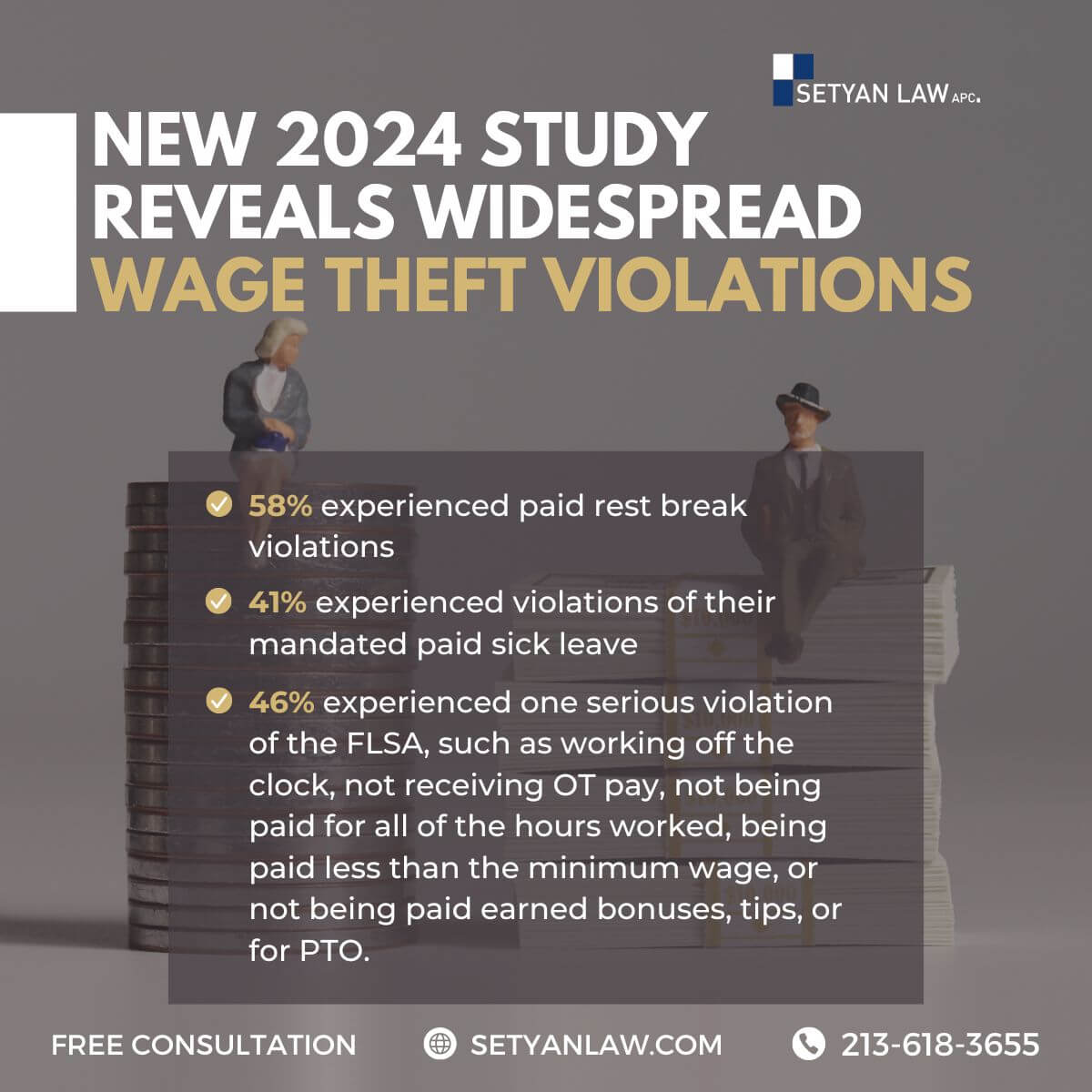Updated May 29, 2025
Are You Getting Lower Wages Than Others?
Pay discrimination remains a pressing issue in workplaces across California and the United States. Despite the existence of laws designed to protect employees from unfair pay practices, many individuals still find themselves underpaid due to their gender, race, age, or other protected characteristics. Understanding how to identify and prove pay discrimination is crucial for employees seeking justice and fair compensation. This article will guide you through the process of recognizing pay discrimination, gathering evidence, and taking appropriate legal action.
Understanding Pay Discrimination
Pay discrimination occurs when employees receive unequal pay for performing similar work, primarily based on characteristics such as gender, race, age, or disability. This form of discrimination can have significant consequences on an individual’s financial stability and overall well-being.
Key Characteristics of Pay Discrimination
- Gender Disparities: Women often face lower starting salaries compared to their male counterparts, even when they possess similar qualifications and experience.
- Racial Inequities: Employees from minority backgrounds may receive less compensation than their white colleagues, despite having comparable performance evaluations.
- Age and Disability Factors: Older employees or those with disabilities may find themselves at a disadvantage when it comes to salary increases or promotions.
Recognizing these patterns is the first step in addressing pay discrimination in the workplace.
Identifying Signs of Pay Discrimination
Before taking action, it is essential to identify whether you are experiencing pay discrimination. Here are some steps to help you assess your situation:
Research Salary Standards
Begin by researching the typical salary range for your position within your industry and geographic area. Websites like Glassdoor, PayScale, and the Bureau of Labor Statistics can provide valuable insights into average salaries based on job title, experience, and location.
Compare Compensation with Colleagues
Engage in open discussions with trusted coworkers about their salaries. While it may feel uncomfortable, understanding how your pay compares to others in similar roles can reveal potential disparities.
Analyze Job Responsibilities
Consider the responsibilities and qualifications required for your position. If you find that your job duties align closely with those of higher-paid colleagues, this may indicate a pay disparity that warrants further investigation.
Gathering Evidence of Pay Discrimination
Once you suspect pay discrimination, it is crucial to collect evidence to support your claim. Here are some types of documentation that can strengthen your case:
Salary Records
Maintain a record of your salary history, including any raises or bonuses received. Additionally, gather information on the salaries of colleagues in similar roles, if accessible.
Performance Evaluations
Document your performance reviews and any feedback received from supervisors. Positive evaluations can help demonstrate that your pay does not reflect your contributions to the company.
Communication Records
Save any emails, messages, or documents that discuss pay, promotions, or raises. These communications can serve as evidence of discriminatory practices.
Witness Statements
If possible, obtain statements from coworkers who may have witnessed discriminatory practices or have experienced similar issues. Their testimonies can bolster your case.
Understanding California Law on Pay Discrimination
California has robust laws in place to protect employees from pay discrimination. Familiarizing yourself with these regulations can empower you to take action.
Equal Pay Act
The California Equal Pay Act mandates that employees receive equal pay for equal work, regardless of gender. Employers are prohibited from paying different wages to employees who perform substantially similar work unless the pay difference is based on legitimate factors such as seniority, merit, or a specific skill set.
Fair Employment and Housing Act (FEHA)
The FEHA prohibits discrimination based on various protected characteristics, including race, gender, age, and disability. Under this law, employees can file complaints against employers who engage in discriminatory pay practices.
Filing a Complaint with the Equal Employment Opportunity Commission (EEOC)
If you have gathered sufficient evidence and believe you are a victim of pay discrimination, you can file a complaint with the EEOC. Here’s how to navigate the process:
Step 1: Submit an Inquiry
Begin by submitting an online inquiry to the EEOC. This initial step allows you to express your concerns and receive guidance on the next steps.
Step 2: Participate in an Interview
The EEOC will conduct an interview to gather more information about your situation. Be prepared to discuss your evidence and any relevant details.
Step 3: File a Formal Charge
If the EEOC determines that your case warrants further investigation, you will need to file a formal charge of discrimination. This can typically be done through the EEOC’s public portal.
Step 4: Await Investigation Results
After filing your charge, the EEOC will investigate your claim. They may reach out to your employer for their side of the story and will ultimately provide you with their findings.
Seeking Legal Representation
While it is possible to navigate the complaint process on your own, seeking legal representation can significantly enhance your chances of success. An experienced employment lawyer can provide valuable insights and guidance throughout the process.
Benefits of Hiring an Employment Lawyer
- Expertise in Employment Law: A lawyer specializing in employment law will have a deep understanding of the legal landscape and can help you navigate complex regulations.
- Evidence Collection: An attorney can assist you in gathering and organizing evidence to build a strong case.
- Negotiation Skills: If your case leads to negotiations or settlements, a lawyer can advocate on your behalf to ensure you receive fair compensation.
Strategies for a Successful Pay Discrimination Claim
To maximize your chances of a successful claim, consider the following strategies:
Document Everything
Keep meticulous records of all communications, evidence, and interactions related to your pay discrimination claim. This documentation will be invaluable in supporting your case.
Address Discrimination Internally
Before escalating the issue, consider addressing your concerns with your employer or HR department. This approach may lead to a resolution without the need for legal action.
Maintain Confidentiality
Be cautious about discussing your case publicly or on social media. Inconsistent statements or public discussions can undermine your claim.
Stay Informed
Keep yourself updated on changes in employment law and any relevant court cases that may impact your situation. Knowledge is a powerful tool in advocating for your rights.
Conclusion
Proving pay discrimination in California requires diligence, research, and a clear understanding of your rights. By recognizing the signs of discrimination, gathering evidence, and navigating the legal process, you can take significant steps toward achieving fair compensation. If you believe you have been subjected to pay discrimination, consider seeking legal assistance to help you navigate this challenging landscape. Remember, you have the right to fair pay for your work, and there are resources available to help you fight for justice.
Call Setyan Law at (213)-618-3655 to schedule a free consultation.






